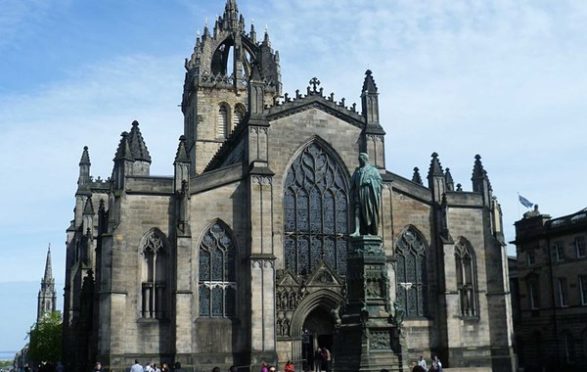A new study has revealed the link between one of Scotland’s most famous churches and an ancient forest in Morayshire.
The research into the timber used to build the bell tower of St Giles in Edinburgh has uncovered details about its construction as the kirk’s 900th anniversary beckons.
Historic Environment Scotland provided funding for the South East Scotland Oak Dendrochronology project, led by Dr Coralie Mills, to investigate the five-storey timber frame within the bell tower of St Giles’ High Kirk on the Royal Mile.
Originally founded in 1124, the church has undergone many additions and alterations during its history, particularly in the 19th century.
Dendrochronology – the process of dating tree rings to the exact year they were formed – was conducted on samples from oak timbers in the bell frame, which has refined the probable date for completion of the St Giles’ bell tower to between 1460 and 1467.
These established the felling dates for timber in the frame – in the winters of 1453-54 and 1459-60 – and revealed it was sourced from one of the last remaining reserves of old oak timber in Scotland, the Royal Forest of Darnaway, in Morayshire.
Dr Coralie Mills, who carried out the work, told History Scotland: “Discovering the date and provenance of the timbers in the tower at St Giles and allowing a new insight into the medieval history of our native woods, has been a highlight of my career.
“The mid-15th century was a pivotal time when Scotland turned to Scandinavia for most of its timber supply, but this research shows that Darnaway still had reserves of old growth oak, by then a very scarce and valuable resource in Scotland.
“The St Giles’ timbers match closely with other material from reused timber in the Chapel Royal at Stirling Castle, which is also thought to have come from Darnaway.
“These results enhance our understanding of St Giles’ construction history and provide valuable insights into the medieval timber supply in Scotland.”
John Lawson, Edinburgh’s city archaeologist, said: “This fascinating research into the original timber used to build the bell tower of St Giles’ has given us new insight into the Kirk, a building we thought we knew so well.
“This has been an incredible piece of work which has helped shed light on the question of exactly when and how the present tower was constructed.”
